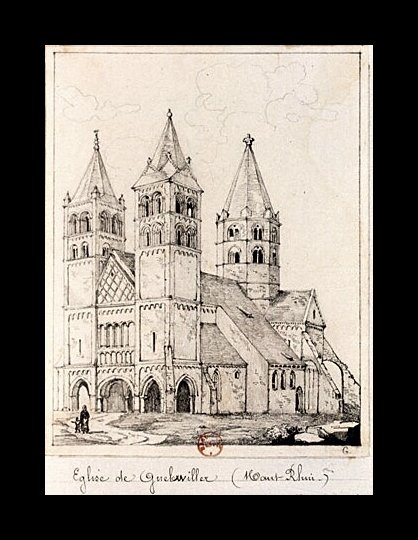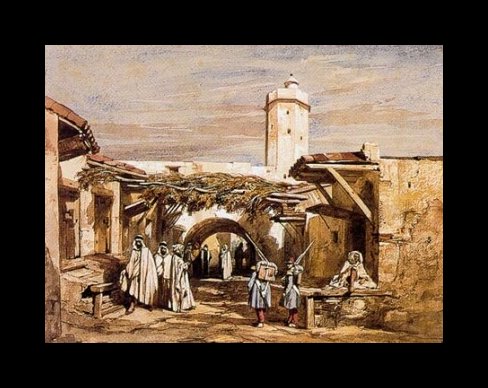Adrien Dauzats (1804-1868)
Get a Dauzats Certificate of Authenticity for your painting (COA) for your Dauzats drawing.
For all your Dauzats artworks you need a Certificate of Authenticity (COA) in order to sell, to insure or to donate for a tax deduction.
Getting a Dauzats Certificate of Authenticity (COA) is easy. Just send us photos and dimensions and tell us what you know about the origin or history of your Dauzats painting or drawing.
If you want to sell your Dauzats painting or drawing use our selling services. We offer Dauzats selling help, selling advice, private treaty sales and full brokerage.
We have been authenticating Dauzats and issuing certificates of authenticity since 2002. We are recognized Dauzats experts and Dauzats certified appraisers. We issue COAs and appraisals for all Dauzats artworks.
Our Dauzats paintings and drawings authentications are accepted and respected worldwide.
Each COA is backed by in-depth research and analysis authentication reports.
The Dauzats certificates of authenticity we issue are based on solid, reliable and fully referenced art investigations, authentication research, analytical work and forensic studies.
We are available to examine your Dauzats painting or drawing anywhere in the world.
You will generally receive your certificates of authenticity and authentication report within two weeks. Some complicated cases with difficult to research Dauzats paintings or drawings take longer.
Our clients include Dauzats collectors, investors, tax authorities, insurance adjusters, appraisers, valuers, auctioneers, Federal agencies and many law firms.
We perform Adrien Dauzats art authentication, appraisal, certificates of authenticity (COA), analysis, research, scientific tests , full art authentications. We will help you sell your Adrien Dauzats or we will sell it for you.
Adrien Dauzats was born in Bordeaux in 1804. He was a painter, illustrator, and writer. His early training was as a theatrical scene painter, and designer of lithographs. He first worked in Bordeaux under Pierre Lacour. He later became an assistant to the scene painter Thomas Olivier, who was the Chief Decorator at the Grand Theatre in Bordeaux. He moved to Paris, and joined the studio of Julien Michel Gue, the historical and landscape painter. Julien Gue recommended him to the decorators of the Theatre Italien, as well as Mattis, Desroches and Blanchard.


Dauzats had a very close association with Baron Isidore Justin Severin Taylor, who was the Royal commissioner for the Theatre Francais dating from 1827. Baron Isidore Taylor was responsible for editing, “Voyages pittoresques et romantiques dans l’ancienne France.” He was also an avid collector of lithographed drawings, and paintings. Dauzats, together with Bonnington, Villeneuve and Ebeniste Fragomand contributed designs for lithographs to the, ‘Voyages pittoresques dans l’ancienne France.’
It was through Baron Isidore Taylor that Dauzats made his first voyage to Eygpt, Syria, Palestine, and Turkey in 1830 on a civil matter. He was employed as a lithographer, and the main purpose of the mission was to secure two obelisks from the ruins of Thebes.


The travelling party arrived in Cairo, and spent several weeks there, before setting off to cross the Sinai desert. After three weeks they reached the monastery of St Catherine. The party spent a number of days there, sketching, and getting used to their surroundings. Dauzats described his time there as, “the most perfectly spent and happiest of my life.” The monastery of St. Catherine was very popular with artists, and writers of the nineteenth century. Dauzats was to produce a painting of the Monastery, entitled, “Monastery of St. Catherine, Mount Sinai,” which now hangs in the Louvre. Art critics have commented that Dauzats training in the theatre, together with his ability to create the ‘picturesque,’ within the confines of a stage is very apparent in this magnificent imposing painting of the monastery.
Dauzats was very interested in depicting the architecture of the Orient, in his paintings. Paintings such as, “Portes de Fer,” which now hangs in the Musee des Beaux Arts in Lille and “Sinbad le marin,” which is in the Musee des Beaux Arts in Bordeaux, show his fascination with the picturesque,and emotive qualities of architecture.
Dauzats had a love of the use of strong colours in his works, and Oriental subject matters, gave him the perfect scope to use them to good effect. We need only look at the rich and opulent colours of the costumes of the Orient to understand why he was seduced by this.
Dauzats was also admired by Delacroix, a fellow Orientalist. Delacroix particularly admired his technical skill as an architectural painter. Delacroix consulted him on the background for the Deux Foscari, and Dauzats for his part helped to promote local interest in Delacroix in his native Bordeaux.
Reviews
1,217 global ratings
5 Star
4 Star
3 Star
2 Star
1 Star
Your evaluation is very important to us. Thank you.
